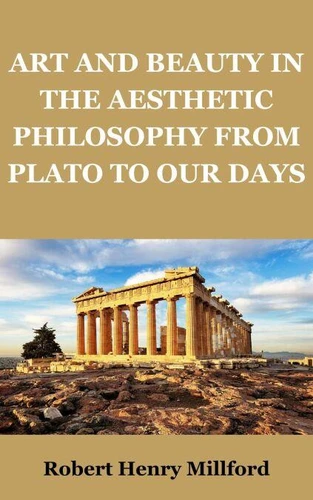Art and Beauty in the Aesthetic Philosophy from Plato to Our Days
Par :Formats :
Disponible dans votre compte client Decitre ou Furet du Nord dès validation de votre commande. Le format ePub est :
- Compatible avec une lecture sur My Vivlio (smartphone, tablette, ordinateur)
- Compatible avec une lecture sur liseuses Vivlio
- Pour les liseuses autres que Vivlio, vous devez utiliser le logiciel Adobe Digital Edition. Non compatible avec la lecture sur les liseuses Kindle, Remarkable et Sony
 , qui est-ce ?
, qui est-ce ?Notre partenaire de plateforme de lecture numérique où vous retrouverez l'ensemble de vos ebooks gratuitement
Pour en savoir plus sur nos ebooks, consultez notre aide en ligne ici
- FormatePub
- ISBN8227424501
- EAN9798227424501
- Date de parution12/09/2024
- Protection num.pas de protection
- Infos supplémentairesepub
- ÉditeurBig Dog Books, LLC
Résumé
Platonic aesthetics, rooted in Plato's Theory of Forms, posits that beauty is an ideal and transcendent quality reflecting the perfection of abstract Forms. Plato argues that true beauty exists beyond the material world and that art's value lies in its ability to represent these higher ideals. This concept significantly influenced subsequent Greek philosophers, including Aristotle, who focused on the harmony and proportion of beauty, and Plotinus, who integrated Platonic ideas into a mystical framework emphasizing beauty as an emanation from the divine. Roman and medieval philosophers, such as Cicero, Seneca, Augustine, and Aquinas, engaged with Platonic aesthetics, adapting these ideas within their own ethical and theological contexts.
During the Renaissance, artists like Leonardo da Vinci and Michelangelo incorporated Platonic ideals into their work, emphasizing ideal forms and proportion. In contemporary philosophy, Platonic aesthetics continues to resonate, though often in reinterpreted forms. Modern theorists explore Platonic ideas in relation to abstract art, metaphysics, phenomenology, and the ethics of beauty. While postmodern critiques challenge the universality of Platonic ideals, the influence of Plato's conception of beauty persists in discussions about the nature of art, the role of aesthetic experience, and the relationship between beauty and truth.
During the Renaissance, artists like Leonardo da Vinci and Michelangelo incorporated Platonic ideals into their work, emphasizing ideal forms and proportion. In contemporary philosophy, Platonic aesthetics continues to resonate, though often in reinterpreted forms. Modern theorists explore Platonic ideas in relation to abstract art, metaphysics, phenomenology, and the ethics of beauty. While postmodern critiques challenge the universality of Platonic ideals, the influence of Plato's conception of beauty persists in discussions about the nature of art, the role of aesthetic experience, and the relationship between beauty and truth.
Platonic aesthetics, rooted in Plato's Theory of Forms, posits that beauty is an ideal and transcendent quality reflecting the perfection of abstract Forms. Plato argues that true beauty exists beyond the material world and that art's value lies in its ability to represent these higher ideals. This concept significantly influenced subsequent Greek philosophers, including Aristotle, who focused on the harmony and proportion of beauty, and Plotinus, who integrated Platonic ideas into a mystical framework emphasizing beauty as an emanation from the divine. Roman and medieval philosophers, such as Cicero, Seneca, Augustine, and Aquinas, engaged with Platonic aesthetics, adapting these ideas within their own ethical and theological contexts.
During the Renaissance, artists like Leonardo da Vinci and Michelangelo incorporated Platonic ideals into their work, emphasizing ideal forms and proportion. In contemporary philosophy, Platonic aesthetics continues to resonate, though often in reinterpreted forms. Modern theorists explore Platonic ideas in relation to abstract art, metaphysics, phenomenology, and the ethics of beauty. While postmodern critiques challenge the universality of Platonic ideals, the influence of Plato's conception of beauty persists in discussions about the nature of art, the role of aesthetic experience, and the relationship between beauty and truth.
During the Renaissance, artists like Leonardo da Vinci and Michelangelo incorporated Platonic ideals into their work, emphasizing ideal forms and proportion. In contemporary philosophy, Platonic aesthetics continues to resonate, though often in reinterpreted forms. Modern theorists explore Platonic ideas in relation to abstract art, metaphysics, phenomenology, and the ethics of beauty. While postmodern critiques challenge the universality of Platonic ideals, the influence of Plato's conception of beauty persists in discussions about the nature of art, the role of aesthetic experience, and the relationship between beauty and truth.


















